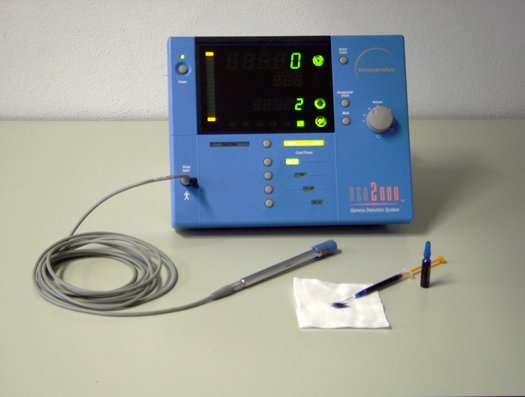A Gamma Probe Device Allows Radioguided Diagnosis and Treatment to be Undertaken During and Before Surgery by Identifying Radiolabeled Tissue
The Gamma Probe Device allows surgeons to identify radio-labeled tissue before and during surgery for radio-guided diagnosis and surgery. Surgeons frequently struggle to locate tissues within the human body, such as tumours, parathyroid glands, and lymph nodes. As a result, the proper use of a gamma probe allows the surgeon to make a smaller incision and locate the tissues of interest.
One of the most common applications for gamma probes is in a surgical procedure known as Sentinel Node Biopsy, which is used to determine whether a tumour has metastasized, or spread to new locations. These biopsies are commonly used in the staging of breast cancer and melanoma, and they are becoming more popular in the staging of other types of cancer as well. As a tracer for the Gamma Probe Device, a carrier substance or radionuclide such as Technetium-99m, Nano colloid, or sestamibi is used. Technetium-99m is a radioisotope that is commonly used in Sentinel Node Biopsies.
Gamma probes are available in three configurations: handheld, table-top, and trolley mounted. The closed probe device market is being driven by factors such as product launches with advanced features, rising incidence of breast cancer, and rising population awareness about the benefits of gamma radiation over other detection techniques such as X-ray, which is increasing the adoption rate among patients and its use by surgeons. On the other hand, patients' preference for cost-effective alternatives is expected to be a major impediment to the market for Gamma Probe Device.
During the forecast period, new product launches by key players will fuel the growth of the Global Gamma Probe Device Market. For example, in July 2016, Dilon Technologies, Inc., a leading provider of innovative medical solutions, unveiled the new purple Navigator 2.0 gamma probe system for sentinel lymph node biopsy. The system is aided by features such as wireless operation, ease of use, exceptionally long life, and ergonomic stainless steel probes that can be sterilized using major sterilization methods. Furthermore, this company used inorganic strategies such as providing full-service support for the existing Navigator GPS system in the field.




Comments
Post a Comment